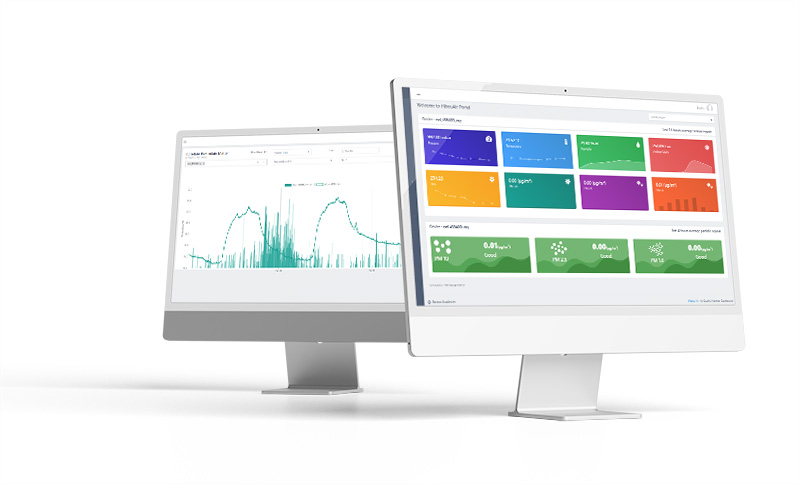Improve air quality in schools, colleges and high schools with CO2 sensors
Nursery, primary school, college, high school: children spend 90% of their time in enclosed spaces. And contrary to popular belief, indoor air is just as incriminated as outdoor air. Both developed and developing countries are affected. For their health and comfort, the quality of the air they breathe is as important as the food they are fed.
Good air quality inside a building has a proven effect on the quality of concentration, the rate of absenteeism in schools, and well-being. Conversely, poor air quality can promote the emergence of symptoms such as headaches, fatigue, irritation of the eyes, nose, throat and skin, dizziness, or more respiratory allergies and asthma.
The health and economic issues related to indoor air quality are significant. It is therefore important to implement actions to improve indoor air quality, whether in housing or in establishments open to the public such as schools.
Children can indeed be exposed in schools and places of reception to several pollutants emitted by furniture, cleaning products and school supplies. The concentrations of pollutants measured in the air of schools can sometimes be higher than in other places of life, also due to the density of occupation of the premises and often insufficient air renewal.
In school buildings, there are many possible sources of emissions of polluting substances: building materials, paint, furniture, heating appliances, cleaning products, and materials used for various activities (glues, paint, markers, etc.). Poor indoor air quality can promote the emergence of various symptoms: headaches, fatigue, irritation of the eyes, nose, throat, skin, dizziness, allergic symptoms, and asthma. Conversely, good indoor air quality, and in particular sufficient ventilation of classrooms, has positive effects: reduced absenteeism, the well-being of occupants, and better learning for children.
Monitoring air quality in schools with a CO2 sensor
In class, there is always a risk of COVID-19 infection. Children can also contract Covid. For this reason, and because we want to contain the spread of the virus in society, CO2 monitoring is necessary. CO2 is not in itself dangerous because it is present naturally in the air. Outside, it is diluted. But in indoor air, its concentration can increase very quickly in the absence of ventilation. The problem is that a high concentration of CO2 in the air leads to health risks and affects the cognitive abilities of the occupants.
As CO2 is an odourless and invisible gas, it is undetectable to humans. This is why one of the solutions for limiting exposure to air with too much CO2 is to install CO2 sensors.
These sensors make it possible to measure the quality of the air in real-time to alert in the event of exceeding the limit values.
CO2 sensors are important to monitor the proper ventilation of classrooms.
In Europe, several schools have been equipped with CO2 sensors to monitor classroom air. The teacher is alerted when the values exceed the thresholds. He can then ventilate the room. These sensors also make it possible to educate and raise the awareness of children on the issue of air quality. And during an epidemic, they also make it possible to fight against the risks of contamination with COVID-19 by lowering the concentration of contaminated particles in the air.
The Québec government and educational institutions are continuing to closely monitor the air quality in classrooms and ensure that appropriate mitigation measures are applied when problematic situations occur.
Read more https://www.quebec.ca/en/education/preschool-elementary-and-secondary-schools/air-quality-schools
What solutions does HibouAir offer for air quality in public buildings such as schools?
Smart Sensor Devices has developed an air quality monitor device called HibouAir. HibouAir is an affordable wireless device with a simple setup that helps you accurately measure indoor environmental data for observations and studies to preserve a healthy air quality environment. Its small size and simple shape make it easy to mount on the wall of a classroom.
The air quality data is stored in the cloud and can be accessed remotely using HibouAir Dashboard. It provides real-time as well as historical data with various maps, charts and graphs for analysis. It can also generate alert notifications and periodically reports upon request.

The app presents information in a logical way, with a clear display of air quality. This indoor air quality monitor provides not only the concentration of different elements in the air such as CO2 or PM and volatile organic compounds (VOC) but also the other parameters such as humidity, temperature, atmospheric pressure & light level that affect the ambient environment around us. The colour codes indicate whether the measurements represent good, moderate or severely polluted air.
Get Air quality monitoring solution for school
Photo by Max Fischer: https://www.pexels.com/photo/teacher-asking-a-question-to-the-class-5212345/

